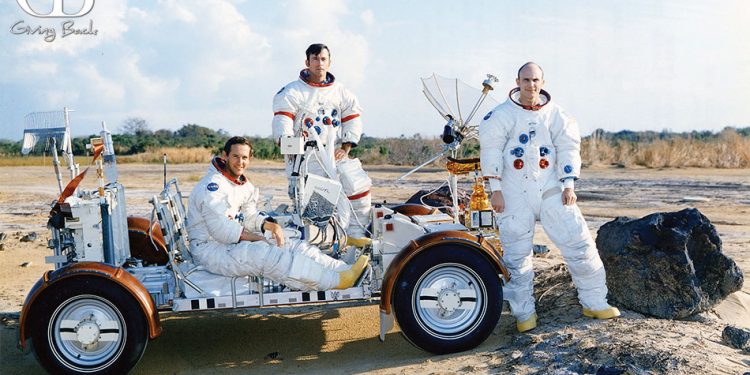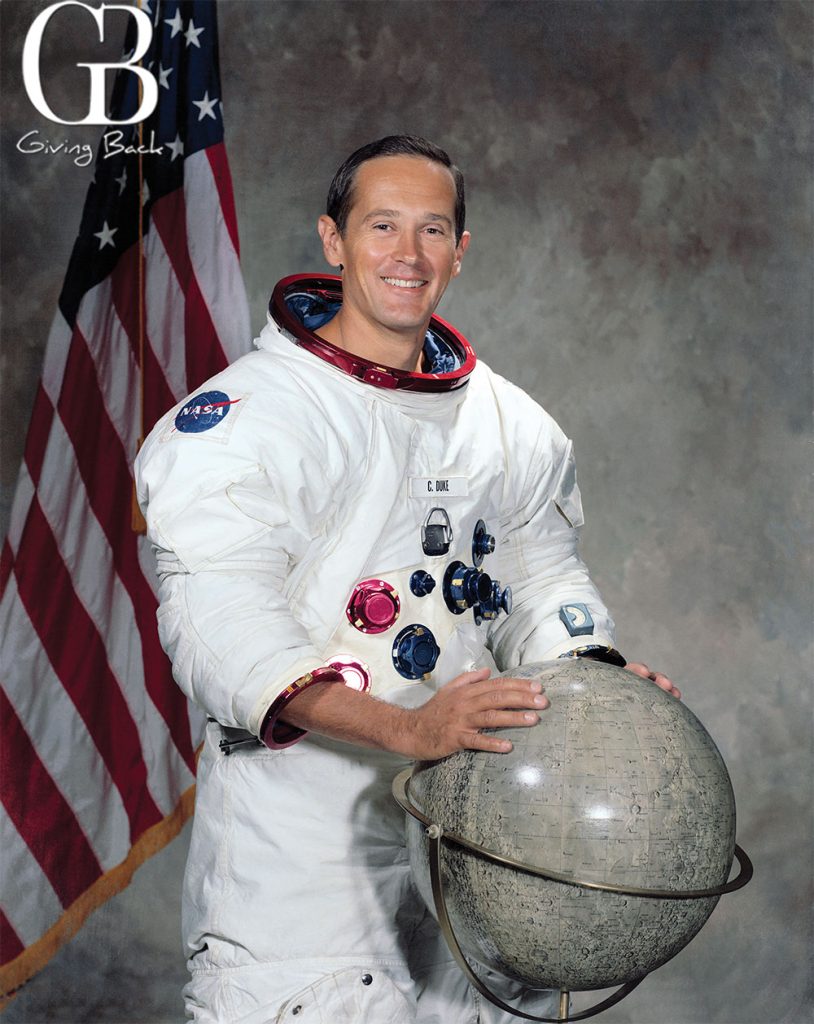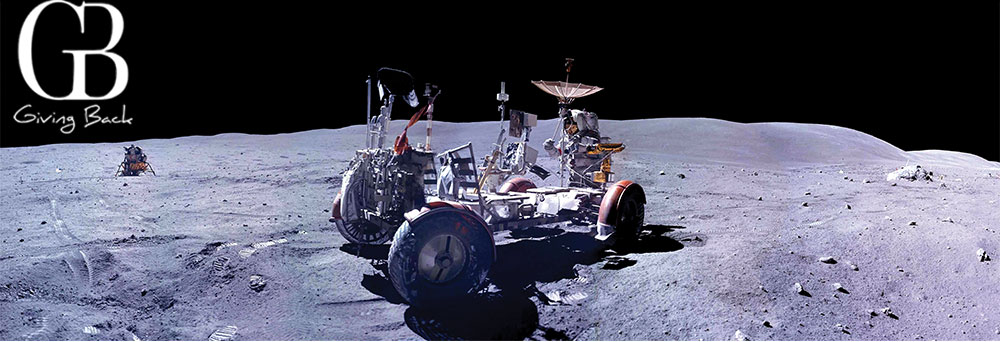Another Giant Leap for Mankind

In April 1972, Charlie Duke became the youngest man – and just the tenth of twelve men – to ever walk on the Moon.
Twenty-four Americans journeyed to the moon in just four years – from 1968 to 1972. Lunar exploration hit new heights during the last two of those four years, with extended stays on the moon, ambitious exploration on the surface and from orbit, and long journeys in electric powered rovers.
In April 1972, Apollo 16 Lunar Module Pilot Charlie Duke became the youngest man, and just the tenth of twelve men, to ever walk on the Moon. The mission was NASA’s fifth, and second to last, successful effort to land astronauts on the lunar surface.
Apollo 16 also was NASA’s second scientific expedition of the Moon, during which time Duke logged 20.25 hours in extra-vehicular activities and collected 213 pounds of soil and geological samples. He took the only videos of the lunar rover “in action” as it skidded across the surface. Duke is also known for his crucial role as CAPCOM – Capsule Communicator – during the hair-raising Moon landing of Apollo 11.
By Apollo 16, NASA’s team of support personnel was a seasoned group of lunar-exploration veterans, led by legendary Flight Directors Gerry Griffin and Gene Kranz.
Griffin was a Flight Controller, Gemini Systems and Flight Director for Apollo 7, 8, 9, 10, 11, 13, 14 and 16. He was also the Lead Flight Director of Apollo 12, 15, and 17. Later, he served as Deputy Director of NASA’s Dryden Flight Research Center, Deputy Director of the Kennedy Space Center, and Director of NASA’s Johnson Space Center.
Eugene “Gene” Kranz – a former USAF fighter pilot and NASA Flight Director for Gemini 4 and Apollo missions 7, 9, 11, 13, 15, 16 and 17 – was in control when three astronauts perished in a launch pad fire during a procedural test of Apollo 1 in 1967. That dramatic failure led NASA to what became known as the Kranz Dictum, “Tough & Competent,” a dedication to diligence and perfection that permeates through the agency to this day.
Duke, Griffin and Kranz, along with Dee O’Hara, America’s original aerospace nurse who tended to all of America’s astronauts and their families from the Mercury, Gemini and Apollo missions through to the beginning of the Space Shuttle era, will share their personal recollections of Apollo 16 at a special celebration at the San Diego Air & Space Museum on April 23.
“The Apollo program’s Moon landings are some of one of the most significant achievements in human history,” Jim Kidrick, President & CEO of the San Diego Air & Space Museum shared with GB Magazine. “This year is the final year of the 50th Anniversaries of the Apollo program, offering an incredible opportunity to see, hear from, and meet personally the key figures who took part in the most extensive in-person exploration of the lunar surface, a goal of mankind from time immemorial. Apollo 16 is a true giant leap in the quest for knowledge and scientific discovery. The Apollo 16 50th Anniversary celebration is an evening to remember forever!”
To join in this event, sponsor or for more information visit, www.sandiegoairandspace.org







